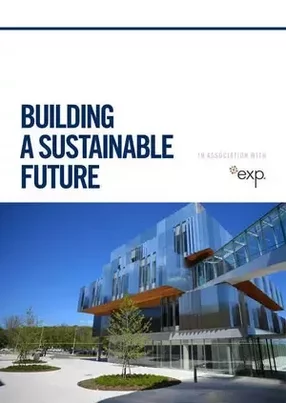The University of Toronto Mississauga is achieving sustainability goals in Canada's education sector
Providing one of the largest further education facilities in Canada, the University of Toronto Mississauga (UTM) holds the reputation of a leading organization in the country. The university is accelerating its prestige with significant growth over the past few years through the development of new facilities, and is home to over 25 buildings with more on the horizon. With sustainability recognized as a top priority at UTM, from both an environmental perspective and as a boost to its reputation as a sustainable organization, the university has formed key plans to meet the challenge head-on.
Tasked with enabling the university to achieve a more sustainable future, Ahmed Azhari, Director of Utilities, Sustainability & Grounds at UTM, believes student engagement is key to realizing this important ambition. “Staff and student engagement is incredibly important because sustainability isn’t just one person’s job,” he affirms. “It’s our job collectively as the UTM community to ensure everything we do reduces the impact on the environment and help mitigate climate change. We’ve conducted lots of student engagement activities to educate both students and faculty members, ensuring they are aware as to how they can use the buildings in a more efficient manner.”
The university has installed energy dashboards into a number of the key buildings on campus to equip students and staff members with the knowledge to understand how much energy the building is using on a real-time basis. To accelerate this project, the university has established a ‘Grow Smart, Grow Green’ strategy which focuses on key topic areas such as green buildings, natural areas, transportation, water management, energy management, waste and recycling. “As part of this scheme, we’ve introduced a ban on bottled water,” explains Azhari. “Bottled water isn’t available to buy anywhere on campus and we’ve replaced the single-use plastic with water fountains that allow those on campus to refill their bottles instead of purchasing new ones. This is key to our sustainability strategy moving forward.”
Operating with a clear goal in mind, the university is engaging with students to develop waste and recycling plans. “We’re trying to create an educational campaign in the community to encourage our students and staff to recycle things properly,” remarks Azhari. “It’s a big engagement project that will help standardize all the waste bins we have on campus, as well as producing new recycling schemes and educating the faculty and community on how to dispose of waste properly.”
With many buildings across campus recognized with a silver standard minimum in Leadership in Energy and Environmental Design (LEED), the university’s buildings – which are made from recycled and regional materials – include features such as green cleaning programs, low-flow fixtures, energy efficient mechanical and electrical systems, low-emitting materials and green roofs. “The construction policy that we have in place is that any new buildings must meet our requirements of being a minimum of LEED silver,” says Azhari. “However, we can’t stop there; we’re always looking to achieve more.” UTM’s HMALC (Hazel McCallion Academic Learning Centre), instructional building, Deerfield Hall and innovation complex all meet this requirement, as well as the minimum target of the upcoming North Building. In addition, the Health Sciences Complex and David building third floor renovation have both achieved LEED gold status, while the new science building is also anticipated to achieve this goal. “I have heavily participated in the design of the New Science building at UTM, which is set to house of the majority of the wet and dry lab research that takes place on campus,” notes Azhari. “It’s targeted to be a minimum LEED silver that will incorporate two major renewable energy systems; geothermal system for building heating and cooling as well as a solar photovoltaic system to offset some of the building electrical requirements. We will ensure that it utilizes other sustainability measures that qualify it to be certified above the minimum target under the LEED program.”
The university formed a key partnership with EXP, through a competitive public procurement process, to help with the design retrofit for two projects on campus; the Recreational Athletics and Wellness Centre (RAWC) and the Kaneff Centre. “EXP designed the system and helped us put the tender out for public pricing. They currently help us on the construction administration and the project management to help successfully deliver,” he says. “The RAWC is an athletics building, it has a swimming pool and a sauna, with significant heating demand requirements. We realized a solar hot water system would be an ideal installation in a building like this to help offset some of the building heating demand and fulfil our commitments to utilizing renewable energy sources in efforts to reduce greenhouse gas emissions.”
Looking to the future, Azhari has a clear vision of how UTM can continue the promising start it has made. “We haven’t finished – we’re always looking to grow. We’ve signed up for the University Climate Change Coalition Challenge (UC3 Challenge), which aims to reduce our greenhouse gas emissions by 37% by 2030, against a 1990 baseline. My vision from a sustainability perspective is to design and enable all future buildings to become Carbon Neutral in order to help remediate our environmental impact and help mitigate climate change.”

